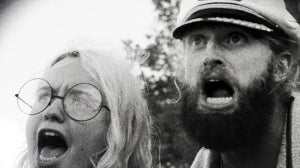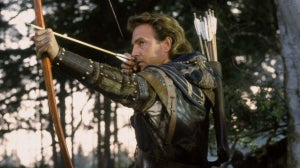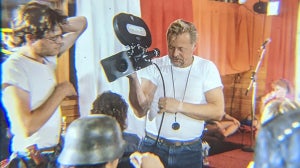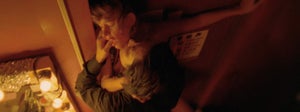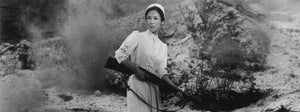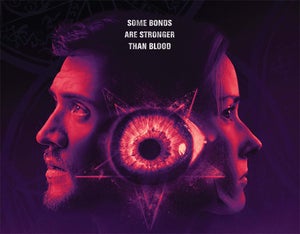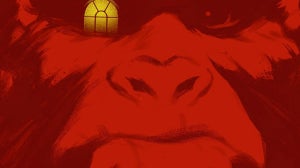
What makes a movie truly frightening? Jump scares? Blood and gore? A formidable villain?
Often, it's all of these things. But beyond surface terrors, few would deny that the most effective scares come from a genuine suspension of disbelief — that lingering uncertainty that what's happening on the screen just might be real.
This concept is at the very core of the "found footage" genre — a raw filmmaking style built on shaky, first-person camera-work, basic editing and improvised action. It mimics the unpredictable feel of an amateur home video, blurring narrative fiction with reality in a way that turns video nasties into genuine snuff films, and folk tales into fact. It’s a genre that encourages the kind of nightmarish fear that tears down the screen barrier — and as such, it has proven one of the most conducive styles for horror moviemaking in history.
Over four decades, found footage has gone from conceptual innovation to genius marketing strategy, and from horror cliché to a framework for renewed experimentation. As [REC] — a true highlight released at the height of the late '00s found footage boom — receives a Blu-ray release in 2021, Arrow Video looks back at how the genre revolutionised horror, and successfully navigated a changing world to remain impactful right up to the present.
Urban Legends
At the height of Italian exploitation in 1980, zombies and cannibals were in vogue. But the most infamous movie of the era didn't so much as jump on the trend — it completely transformed it.
Ruggero Deodato's Cannibal Holocaust is the tale of a young camera crew who vanish while investigating tribespeople in the Amazonian rainforest. Their grisly final days are observed not through staged re-enactions, but through the "real" videotapes left behind from their fatal quest.
It remains riddled with controversy — with much of the outrage directed towards the real killings of animals on-screen in an overzealous attempt for authenticity. But the provocative content and primitive style couldn't have been more effective in disrupting the illusion of fantasy.
With the film's inexperienced actors instructed to keep a low profile upon release, it took only ten days for Cannibal Holocaust to be confiscated by the authorities. Deodato was arrested, charged with obscenity, and prosecuted for murder. Only upon proving that he had not, in fact, killed the cast members on screen, was he acquitted.
The Japanese Guinea Pig series found similar notoriety after a copy of 1985 entry Flower of Flesh and Blood found its way into actor Charlie Sheen's hands. Opening with a disclaimer suggesting that the footage had been mailed to director Hideshi Hino by a crazed fan, this 42-minute torture-porn prototype depicts the kidnapping and dismemberment of a woman in a warehouse. Believing he'd seen a genuine snuff film, Sheen contacted the authorities, resulting in an FBI investigation.
In both cases, the urban legends stuck hard. All copies of Flower of Flesh and Blood were withdrawn from the market in Japan, while Cannibal Holocaust was banned in 40 countries, as rumours fast spread alongside black market VHS tapes. The fiction-shattering marketing power of the "found footage" format was realised, then, in most shocking fashion.
The Greatest Horror Movie Marketing Strategy Of All Time
With the internet still an emerging technology, the late '90s would provide the perfect backdrop for what remains arguably the most effective found footage film of all-time: The Blair Witch Project.
A micro-budget indie movie, ostensibly pieced together from the last-known footage recorded by a trio of missing students in Maryland, Blair Witch reverse-engineered the sensationalised myth-building of films like Cannibal Holocaust and turned it into one of the greatest marketing strategies of all time.
It began with a website, stimulating online discussion by suggesting that a real documentary team had vanished while investigating a local legend. Message boards lit up with speculation over their fates, as even IMDb listed the amateur "actors" as deceased. A separate "factual" documentary titled The Curse of the Blair Witch, meanwhile, aired on television a week ahead of the film's premiere. The movie's eventual release was an event in itself: a much-anticipated resolution to a mystery that had already transcended the screen.
By the time The Blair Witch Project opened in cinemas in 1999, morbid curiosity had peaked to the extent that this $300,000 indie flick was able to return nearly $250m worldwide. It remains, to this day, one of the highest-grossing independent films of all time.
The Found Footage Boom
The success of Blair Witch was the seed for a boom of interest in found footage filmmaking. But as Youtube flooded the internet with real amateur footage from 2005 onwards, audiences would become less susceptible to the contrived re-treads that began to inundate cinema screens. The years 2007-2008 would be pivotal, then, as found footage reached a creative peak, proving that there was value in the form as well as the folklore.
While Paranormal Activity brought the supernatural plot of The Blair Witch Project into the home of a young couple in 2007, J. J. Abrams' Cloverfield merged the format with the out-of-fashion disaster movie, rejuvenating a tired genre for a contemporary audience. Both films were blockbuster successes, taking in north of $175m apiece in box office receipts. But it was the more modest success of a Spanish import that has maintained the better reputation in the years since.
[REC] utilised found footage filmmaking to bring much-needed new life into the zombie movie. And unlike George A. Romero's gimmicky Diary of the Dead, this innovative effort provided real thrills. A claustrophobic slice of tower block terror, it follows real-life television reporter Manuela Velasco and her cameraman as they become trapped in a quarantined apartment building amid a bio-chemical outbreak. It's a premise that feels eerily prescient given the events of 2020 — but it is [REC]'s sense of escalating peril that makes it so effective.
With actors deprived from a full version of the script, each shooting day on the chronologically-filmed project was wrought with real tension and uncertainty, as dramatic death scenes were as much a surprise to the cast as they would eventually be to the viewers. Captured in frenetic, unbroken long takes, [REC] almost feels like live theatre at times, offering genuinely dynamic filmmaking to bridge the gap between amateur spectacle and theatrical prowess.
It's a testament to the skill of directors Jaume Balagueró and Paco Plaza, then, that the film entertains so emphatically without the need to rely on extra-filmic rumour-mongering.
The Future
With inevitable franchises following Blair Witch, Paranormal Activity and [REC], found footage would begin to stagnate in the years that followed. There have been some noteworthy additions (Gareth Huw Evans' Indonesian cult investigation Safe Haven, from found footage anthology V/H/S/2, and Patrick Brice's character-driven psychological horror Creep both get it right), the format wouldn't truly find a new lease of life again until 2018.
By turning the cameras around to explore the very concept of filmmaking itself, Shinichiro Ueda’s genuinely subversive Japanese horror comedy One Cut of the Dead would be the spark to revamp the genre proper.
The opening act consists of a 37-minute unbroken tracking shot, as a camera crew attempting to film a live horror television special are forced to pull off the feat while battling a real zombie invasion. This spectacle is impressive enough in itself, and yet One Cut of the Dead then pulls the rug out from under the viewer at the midway point, setting up one of the greatest filmmaking punchlines of all time as it goes behind-the-scenes in a manner that leaves jaws agape.
The less that's said the better — One Cut of the Dead is a film that deserves to be left unspoiled —but the film’s legacy already offers an indication of how found footage can continue to evolve in the years to come. That director Ueda filmed a sequel during lockdown is evidence of the genre’s continuing ability to adapt as budgets, technology and social discourse see fit; like fellow 2020 found footage innovation Host, One Cut of the Dead: Mission Remote utilises web cameras and Zoom calls as weapon of choice to show that even while social distancing, horror tropes can be given fresh new life with the right minds behind it.
With the film industry rattled with the ongoing struggles of a global pandemic, traditional filmmaking faces a bumpy future. Don’t be surprised, then, if found footage, a genre that thrives on DIY aesthetics and low budget innovation, kicks on in the absence of big budget production. It might take a touch of ingenuity, or even insanity, to get it right — but with cabin fever rife in the age of the viral outbreak, the next wave of creative minds surely won’t be short of inspiration.
For the latest from Arrow Films, follow us on Instagram, Twitter, Facebook, and YouTube.


